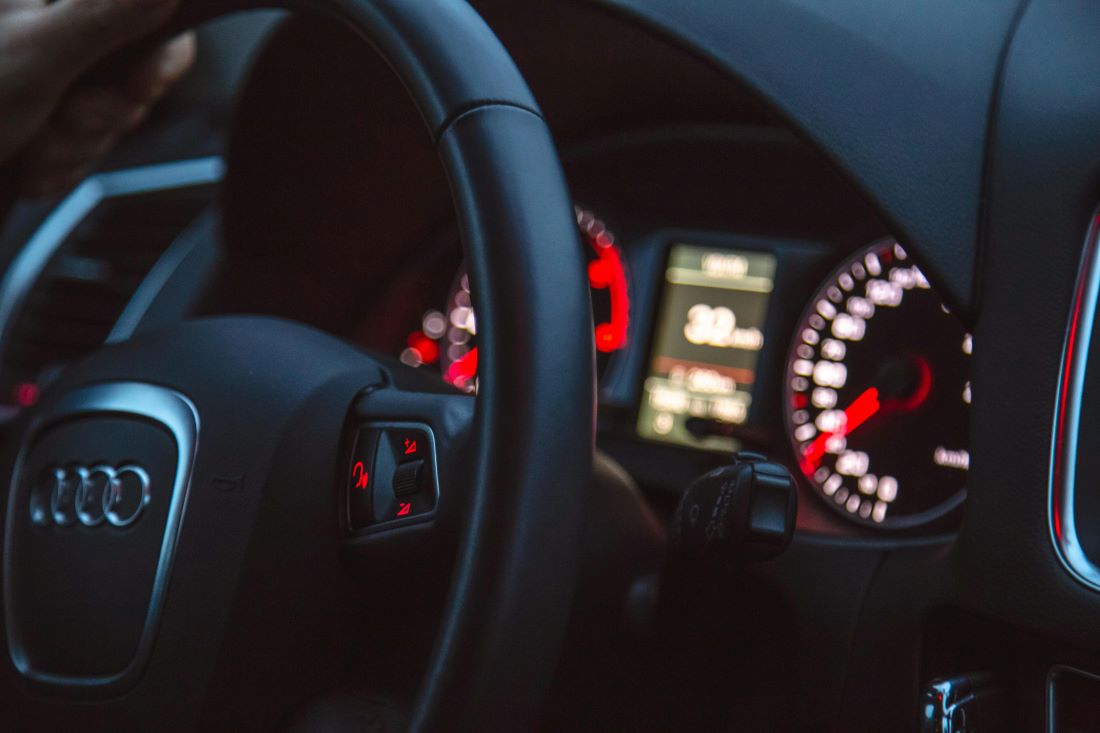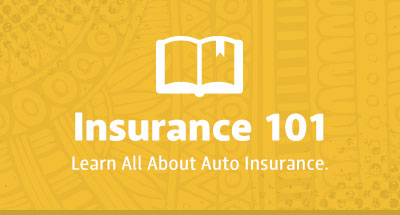Safety Tips For Parents & New Drivers
Earning a driver’s license is a tremendous rite of passage for all young drivers, ushering them out of adolescence and setting them on the exciting first steps into adulthood. But with the excitement of this newfound autonomy comes the responsibilities and consequences that come with that freedom. Driving can pose as much peril as it does promise, and with the innumerable dangers and challenges that can catch an otherwise inexperienced driver off-guard, the responsibility falls on parents and guardians to properly instruct and steer young adults down the path of fostering healthy driving habits within accordance of the law.
It can be challenging for most parents to impart over a lifetime’s worth of good driving habits onto an impressionable young driver. To help with that (and to brush up on a few best practices ourselves), Illinois Vehicle has compiled a list of general safety tips and advice to help in ensuring your teenager is as prepared as they can be for the road ahead.
Picking a Safe First Vehicle
When it comes to teaching your teenager about the rules of the road, a well-maintained and dependable starter vehicle is a must-have. It’s not uncommon for a teenager to have an dream car in mind— the cherry red Camaro, the decked out Mercedes Benz. However, the ideal choice for a first vehicle is more often determined by a number of key factors outside of preference. For example, are the parents or the teenager financing the vehicle? What does their budget look like? What are the running costs of routine maintenance and repairs combined with tags and proper licensing? Not to mention title and license fees (which can fall anywhere between $400-500), annual registration fees ($75-80 a year), insurance costs, fuel expenses, etc.
Teaching your teenager about the monetary expenses and costs that come with owning their own vehicle will serve not only as a valuable lesson in personal responsibility as they grow into adulthood, but also in grooming their driving habits to be responsible and courteous. Choosing a smaller car may not appear immediately ideal, but could save you more money on your registration fee, as well as resulting in cheaper gas and insurance costs. Here are just a few of the projected expenses that go into the upkeep of a vehicle:
- Oil changes, every 3000 miles, usually cost at least $25 – Brake pad replacement, every 30,000 miles, usually cost about $250 each end
- Tire alignment, if you notice the car drifting to one side, usually about $80 – Regular Tune up, if your car is not running right, usually about $130-280
- Tire replacements, every 25,000 miles, usually $100-200 per tire
The American Automobiles Association estimates that basic maintenance between a small, medium, and large size sedan at 10,000 miles can cost about 75.4 cents per mile, but it’s prudent to also allow some room in your budget in the event of any unexpected repairs as they might be needed.
Make Sure To Get as Much Hands-On Experience as Possible
More so than perhaps any potential hazard on the road, the number one threat to a young driver’s life behind the wheel of vehicle more often than not comes down to their own inexperience. The open road poses many potential hazards, both preventable and unpreventable. The most effective method of bracing your teenager for the challenges ahead is to make sure they get as much monitored, hands-on experience behind the wheel as possible.
Driving for the first time can be a nerve-wracking experience, so it’s important to gradually acclimate new drivers to navigating across rural, interstate, and major metropolitan areas. Let your teenager know that it’s okay to be nervous, gradually introducing them to new challenges as they become comfortable. Be sure to set aside time each week (at least 2-5 hours, on average) with your teenager to coach them through the basic principles of operating a vehicle. Find an empty parking lot or space in which to practice the essentials such as three-point turns, mirror and signal checks, as well as parallel parking. In addition, it’s important that they get as much experience driving at different times of the day so that they know how to interact with different environments of traffic. It’s one thing to learn the rules of the road in a classroom, it’s an entirely different matter actually putting them into practice.
Practice Defensive Driving Tactics
Once your teenager is out on the road, it’s important that they understand not only how to drive with regard of the law, but also how to drive with an awareness of those around them. One lesson that every new driver learns from experience is that no matter how faithfully they might follow the rules, they can’t account for the actions and behaviors of those they share the road with. New drivers can often be tempted, often out of their inexperience, to not assert themselves but rather concede authority to the flow of the traffic around them, and in doing so unintentionally making the experience of commuting that much more frustrating. This is where defensive driving comes in.
To put it simply, defensive driving is a set of driving skills that allows you to defend yourself against accidents caused by negligent or intoxicated driving and inclement weather. they’re techniques designed to encourage drivers to be conscious of their speed and distance within relation to others and posted limits, avoid unnecessary distractions that would impair one’s awareness, and conceive of proactive moment-to-moment solutions in cases of emergency. One of the best methods of instilling this form of situational awareness in young drivers is the “drive for five” mentality: drive with regard of who’s to your left, who’s to your right, in front and in back of you, and for the persons within your vehicle. When following traffic, drivers are encouraged to be at a minimum distance of 2 to 3 seconds behind the vehicle in front of them. Following distance should be increased accordingly during instances of inclement weather. Defensive driving is a habit, and as such can only be properly fostered and reinforced through conscious, everyday implementation and practice.
Discuss the Dangers of Reckless, Distracted and Impaired Driving
Distracted driving is defined as, “any activity that could divert a person’s attention away from the primary task of driving”. This definition can apply to any number of activities that motorists (especially beginners) are known to typically engage in, up to and including: texting, using a smartphone, eating or drinking, talking to passengers, manipulating a navigation system, and adjusting a radio.

Perhaps the most deadly and persistent threat among these to driver safety is texting. Cell phone usage is epidemic among motorists, especially young drivers. According to the National Highway Traffic Safety Administration, over 3,179 people were killed in vehicle crashes caused by texting in 2014 alone, while an estimated 431,000 were reported injured through distracted driving incidents that same year. Ten percent of all drivers 15 to 19 years old involved in fatal crashes were reported as distracted at the time of the crashes. While drivers in their 20s account for just 23 percent of drivers in all fatal crashes, they account for nearly 38 percent of distracted drivers who were using cellphones in fatal crashes. The outcome of distracted driving as a result of texting or cellphone use is often fatal, and as such the legal consequences of such incidents are steep, with 14 states prohibiting drivers of all ages from handheld cellphone use while driving and 46 states ban texting while driving. It’s never too early to warn your teenager of the dangers and consequences of distracted driving while hammer home that cellphone use and texting while driving is expressly forbidden. Driving is a serious responsibility and lives of you, your loved ones, and those around you are too important to take lightly.
Enroll Your Teen in a Safe Driver Program
While there’s no substitute for hands-on experience alongside a parent when mentoring young drivers, enrolling your teenager in either a school-sponsored or independent driving course is an excellent way of refining those key lessons learned while on the road. In addition, teenagers who have received instruction from an accredited drivers education course are often viewed favorably by insurance companies who may offer discounts for proactive and responsible young drivers. In fact, a number of insurance agencies and auto manufacturers offer their own affiliate safety training courses as part of their promotion — Bridgestone's 'Teens Drive Smart Driving Experience', teenSMART, Allstate's 'Operation Teen Safe Drive', the National Safety Council’s ‘Alive at 25’ program, and BMW’s 'Street Survival Teen Driving Safety Program', to name just a few.
Signing your teenager up for any one of these sponsored courses can pay dividends in the future. Teen participants in these programs often sign parent-teen driving “contracts” which outline the their responsibilities as young drivers (for instance, driving within speed limits, being home by a preset curfew, etc.) and the consequences of failing to meet those expectations. You can never have too much help in teaching the vital lessons which will set your teenager on the course to become a safe and successful driver.

Be a Good Role Model
All of the aforementioned lessons are important in cultivating positive driving habits in your teenager. However, there remains one component shared through all of these that is essential to your child’s success: you, the caretaker. When parents or guardians become lax in enforcing boundaries and expectations of their children’s driving habits, it can result in catastrophic and life-altering consequences. According to a study courtesy of Insurance.com, out of a sample group of 500 parents surveyed, 29 percent tolerated cell phone use by their teenagers while driving. The study also found that one-third of parents also allowed their teens to drive with underage passengers, while 30 percent allow their teens to drive at night.
When it comes to encouraging young drivers to act responsibly behind the wheel, parents have to be the change they want to see within their children. It’s never too early to foster positive behaviors within ourselves (practicing proper turn signal etiquette, not checking one’s phone while in motion, appropriate lane merging technique, right of way conduct at intersections, etc.) and passing them on to our teenagers. Other ways you can help when teaching a young driver are quite simple: Offer simple, clear instructions when accompanying them as a passenger, remind them to promptly equip their seat belt before turning on the ignition, set rules for yourself and your household regarding distracted driving, and cooperate with other parents and authority figures to stay informed and active in monitoring your teenager’s continued performance as a motorist.






